Authored By: GryphonHR Blog Contributor
GryphonHR blog contributors include , consultants, researchers, and other subject-matter experts who’ve written content for our blog.
September 8, 2023
In today's interconnected world, the landscape of employment is rapidly evolving. The rise of remote work has revolutionized the way businesses operate, offering flexibility and access to a global talent pool. However, this shift brings forth new challenges, especially when it comes to compliance with Form I-9 regulations.
Remote work has redefined the traditional office environment. From bustling corporate headquarters to the quiet corners of home offices, employees are proving that productivity knows no boundaries. This change has allowed businesses to tap into a diverse array of talents, regardless of geographical limitations.
On August 1, 2023, a new Form I-9 and an alternative document examination option for remote verification were introduced for E-Verify enrolled employers. Learn more about the alternative document review option in our recent blog.
The Department of Homeland Security (DHS) is proposing a groundbreaking virtual I-9 inspection program on August 3, 2023. A 60-day comment period is open until October 2, 2023. Comments can be submitted via the Federal eRulemaking Portal under e-Docket ID ICEB–2023–0007, with consideration that submitted information becomes public.
The proposed Non-E-Verify Remote Document Examination Pilot 1 offers a remote verification process for Form I-9, potentially transforming how employers verify eligibility while maintaining integrity. This program targets employers not enrolled in E-Verify, catering to remote work needs.
This pilot program applies to non-E-Verify employers with under 500 employees. Until implemented, non-E-Verify employers must continue in-person document examination requirements. Learn more about the pilot program and comment period here.
While the benefits of remote hiring are undeniable, compliance with Form I-9, the Employment Eligibility Verification form, remains a crucial aspect of the onboarding process. The Form I-9, mandated by the U.S. Citizenship and Immigration Services (USCIS), is designed to verify an employee's identity and eligibility to work in the United States. But how do employers ensure compliance when employees are scattered across different locations?
One solution lies in the concept of authorized representatives. These representatives can review and verify the required documents on behalf of the employer, facilitating the Form I-9 completion process for remote employees. Authorized representatives can range from HR personnel to notaries or even managers who will directly supervise the new hires.
According to USCIS guidelines, any person can review documents for Section 2 verification. However, it’s important to note that employers will be held liable for any mistakes made on the Form I-9 or during the employment eligibility verification process, no matter who completes Section 2.
If leveraging a network of authorized representatives, choosing one that ensures I-9 verifiers are trained on completing the Form I-9 and document complexities can prove to be beneficial.
Embracing technology is another vital step in overcoming the challenges of remote Form I-9 compliance. Electronic I-9 solutions have emerged as a game-changer in simplifying the process. These platforms allow employers to securely store, manage, and access their employees' forms online from any location. Automation features within these systems can help catch errors and ensure that all necessary fields are completed before submission.
Electronic I-9 solutions extend a host of benefits for both E-Verify and non-E-Verify employers. Access to authorized representative networks simplifies document verification, especially for remote hirings. This entails in-person verification for non-E-Verify employers or under the new alternative option for E-Verify employers, virtual tools with live conferencing for remote verifications. Nonetheless, not all electronic I-9 systems offer the same level of convenience, compliance, and capabilities.
Employers with a widespread remote workforce can benefit from centralized management of Form I-9 records. Cloud-based solutions enable seamless access to employees' I-9 forms from various locations, ensuring consistent compliance and efficient management.
As remote work continues to reshape the employment landscape, strategic planning is vital. Companies must proactively address the challenges of remote Form I-9 compliance by adopting electronic solutions, providing thorough training, and establishing clear procedures for authorized representatives.
The age of remote work has opened up new horizons for businesses and employees alike. As organizations embrace this shift, it's crucial to ensure that compliance remains at the forefront. By leveraging technology, authorized representatives, and well-defined processes, businesses can conquer the challenges of remote Form I-9 completion, welcoming a new era of compliance and collaboration.
Modernizing HR processes is a step in the right direction, but it's not the entire journey. Ensuring compliance with Form I-9 and E-Verify regulations is imperative, given the potential for substantial fines and penalties resulting from non-compliance. Thus, selecting the appropriate Form I-9 solution becomes pivotal in safeguarding your team and organization.
Precision takes center stage in electronic compliance. With
compliant electronic I-9 systems, errors such as missing or incorrect data become a rarity. Automated checks and validations ensure that all mandatory fields are accurately completed, streamlining onboarding and minimizing audit-related challenges. Additionally, an efficient electronic I-9 compliance platform should seamlessly track document expiration dates for work authorizations, mitigating risks associated with expired visas or work permits.
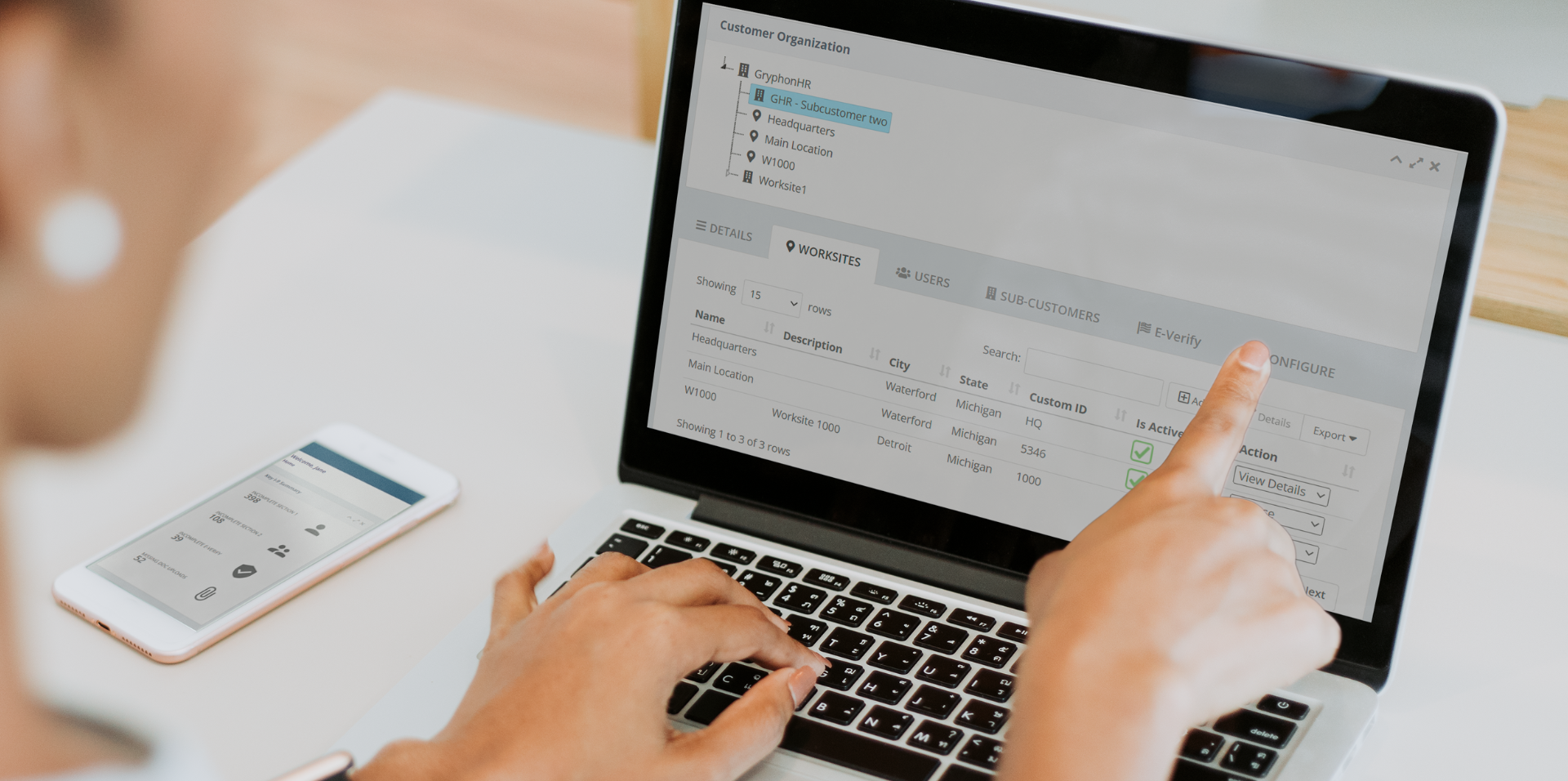
Protecting employee and company data is paramount. Opt for a vendor adhering to the highest standards of security, compliance, and privacy. This commitment is vital to maintaining the integrity of sensitive information.
Maintaining updated records is vital, especially in the digital realm. Failure to provide evidence of I-9 alterations can lead to complications during government agency inspections. A reliable electronic I-9 system aids in effortless tracking, customized report generation, and maintaining thorough audit trails for every change or access.
USCIS regulations dictate the preservation of electronic signatures in a secure manner, preventing unauthorized adjustments or data breaches. Additionally, proper storage and retention of Form I-9 is crucial. Choose an I-9 vendor that facilitates automatic purging when required and meets all storage and retention requirements in line with government regulations.
The adoption of an I-9 solution should not be cumbersome. Opt for a vendor that seamlessly integrates with your HR or business systems, enhancing experiences for your team and employees. Many providers offer integration with E-Verify, streamlining the submission of I-9s and management of E-Verify cases.
While large-scale HR system vendors might offer I-9 services, they may lack dedicated and reliable customer support. Agility and timely responses are vital, and a vendor solely focused on Form I-9 and E-Verify compliance technology ensures continuous updates in response to evolving regulations.
It's important to choose an electronic I-9 system that can support your organizations specific needs and enable you to configure and tailor the software to meet the exact needs of your company, including permission sets. Finding a provider that is flexible enough to support your company's growth and hierarchy, such as multiple locations or multiple employer identification number (EIN) can help to simplify your I-9 management.
An effective I-9 solution should simplify complex processes, making tasks easier for your team. Not all I-9 systems offer user-friendly experiences. Prioritize an intuitive solution that's easy to navigate and provides helpful guidance.
In the journey toward remote Form I-9 compliance, equipping your organization with the right tools, partners, and strategies is key. By doing so, your business can master the challenges of this evolving landscape, ensuring compliance while enabling seamless collaboration.
Find out what makes GryphonHR different than other electronic I-9 system providers. Contact us to an I-9 specialist today or sign-up for our newsletter to stay updated on Form I-9 and E-Verify topics.

Authored By: GryphonHR Blog Contributor
GryphonHR blog contributors include , consultants, researchers, and other subject-matter experts who’ve written content for our blog.
Stay updated on Form I-9 and E-Verify!

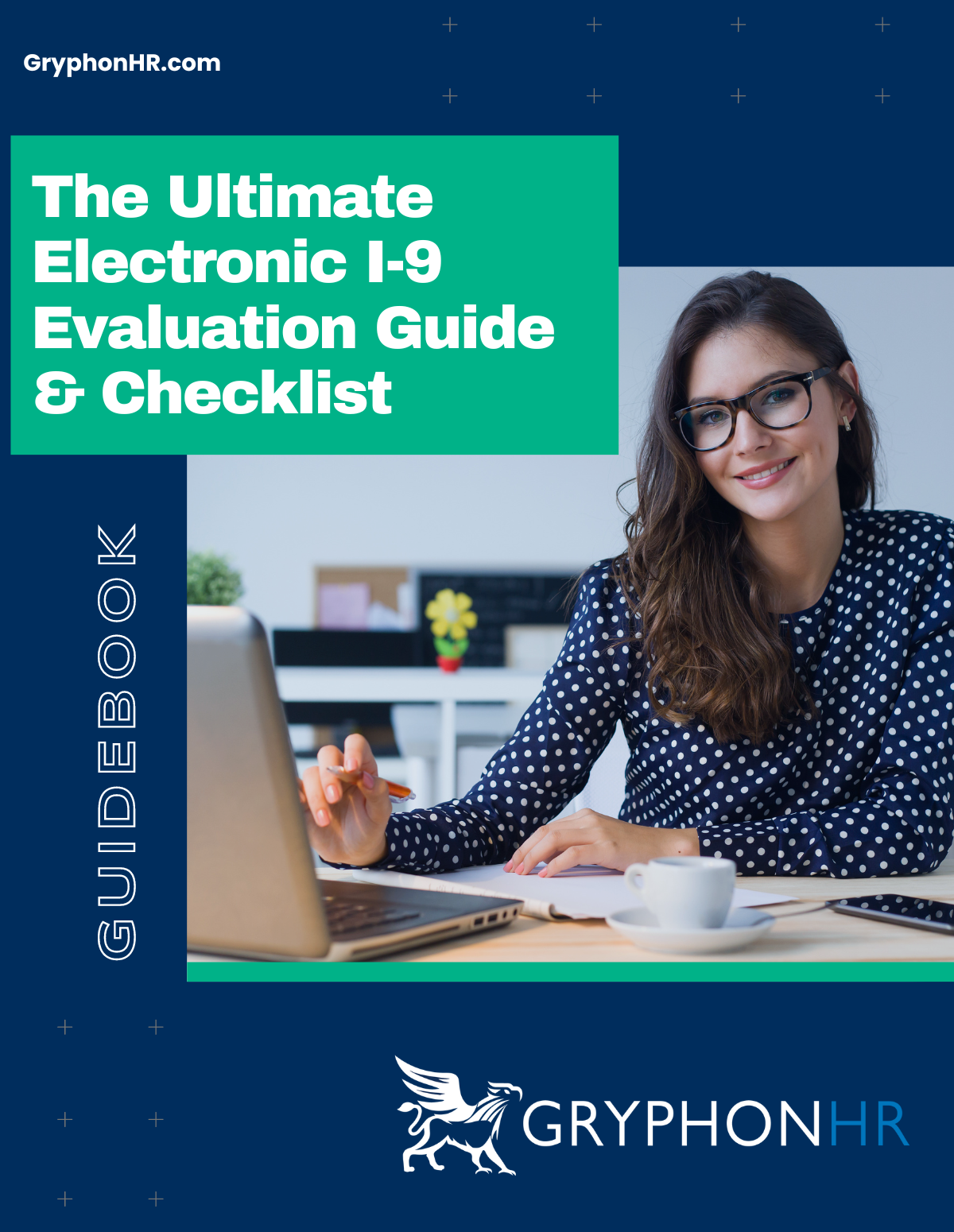
Is your I-9 compliance software placing you at risk? Learn more about the compliance requirements for electronic I-9 systems and how to evaluate important features. Skip the form and download this interactive guide!
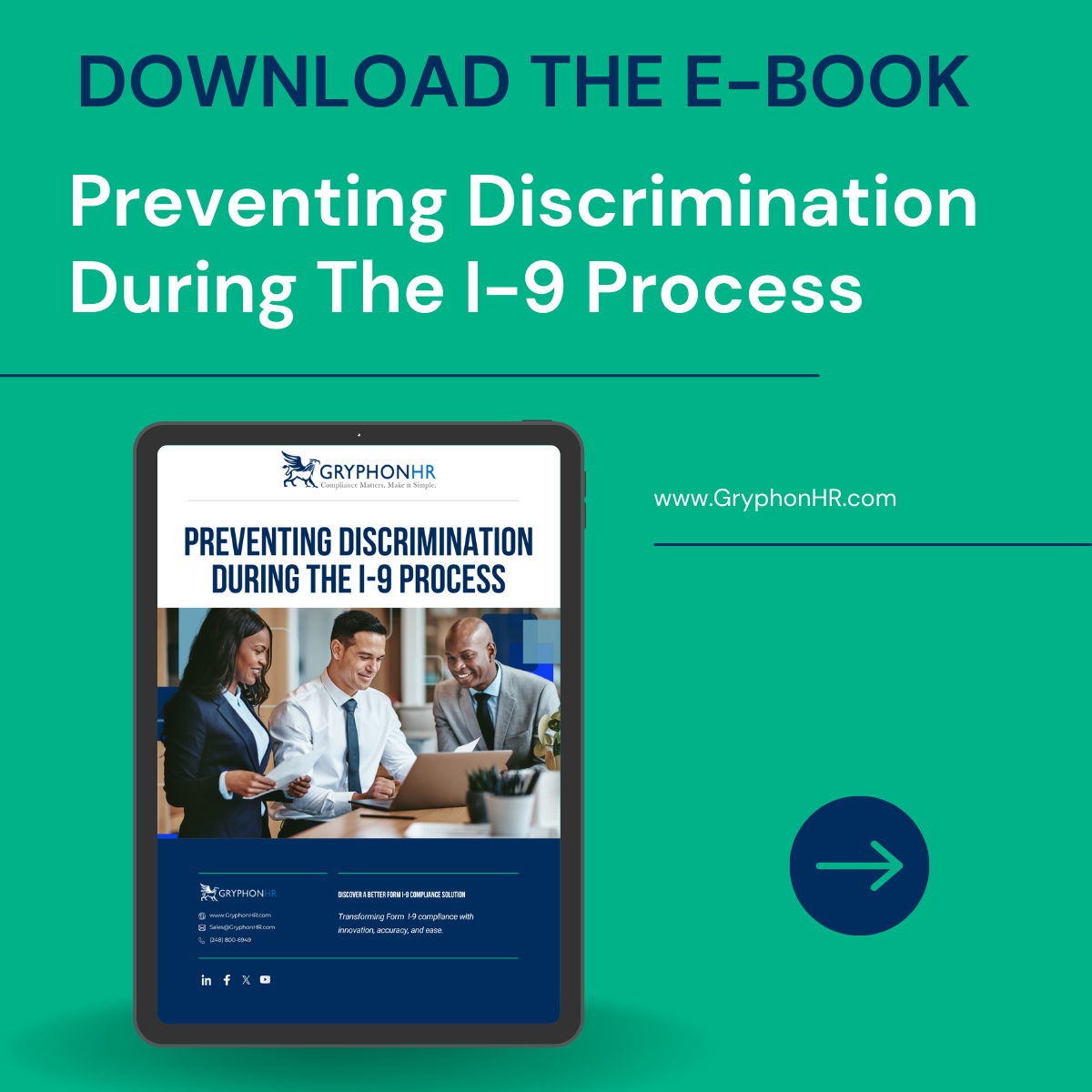
Avoiding discrimination during the Form I-9 process is critical to preventing liability, hefty fines, and unfair hiring practices. Download our free e-book to learn more.

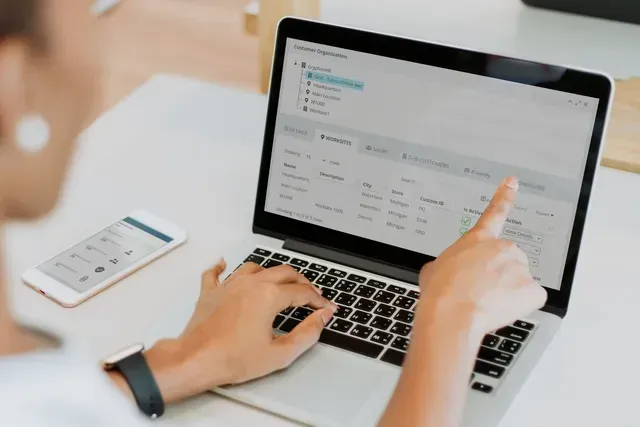
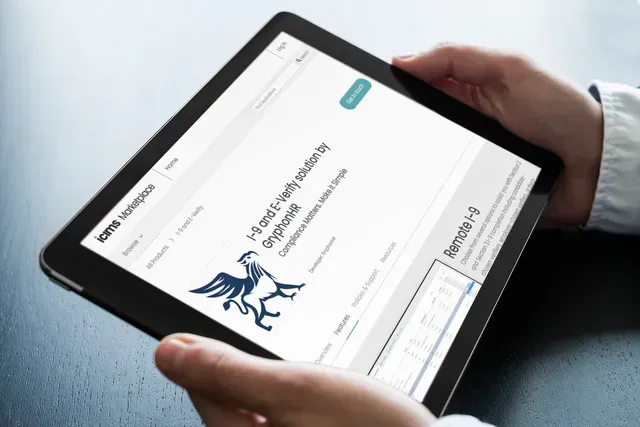
MENU
STAY CONNECTED
Join our newsletter to learn more about Form I-9.